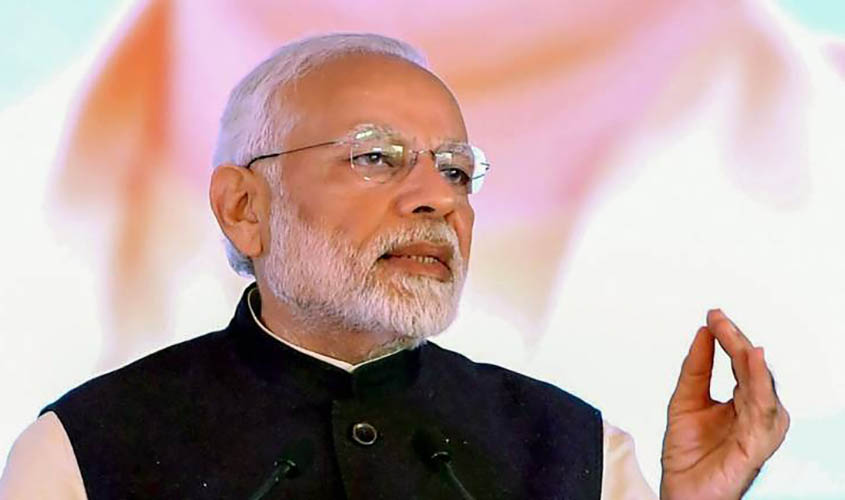The undifferentiated hurrahs that Modi followers shower on every action of the government have led to complacency that course corrections were not needed.
There are those for whom Narendra Modi can do no wrong, and others for whom he can do no right. The first group justify their uncritical stance as being based on “positivity”, forgetting that telling truth to power is usually the most positive contribution an individual can make. The second regard themselves as soldiers in what they call a war against fascism, omitting to add that were the regime truly such, such critics would by now have been in prison. Given the profusion of reading matter (especially online) that comes hurtling at an individual these days, it is no surprise that many confuse possible post-poll leadership scenarios with a pre-poll leadership situation in the BJP. There is no doubt that Narendra Modi (who was identified in 2006 as the next Prime Minister of India by this columnist) will be the Prime Ministerial candidate of the BJP during the 2019 Lok Sabha polls. Should the BJP tally in the Lok Sabha cross 220, it is reasonably certain that Modi will continue to occupy 7 Lok Kalyan Marg for a fresh term. Should his party’s tally fall below 180, it will be difficult for the next government to have a BJP leader at its head. Between 180 and 220 seats, it is still feasible for the BJP to come back to office. However, in such a situation, prospective allies may prefer a less assertive leader than Modi, who since 26 May 2014 has run the government in his individualistic manner with the assistance of Arun Jaitley and Amit Shah. Let it be repeated that first among those within the BJP who would fit the leadership bill in a 180-220-seat context is Nitin Gadkari. The Maharashtra leader is known and liked for his easygoing spirit and his accessibility, although it must be said that Rajnath Singh too has both these qualities. Where Gadkari scores is that unlike Rajnath, who seems (outwardly at least) to have become almost a bystander in his ministry, Nitin Gadkari controls the departments he is tasked with, and has therefore done a much better job of generating results than his less autonomous ministerial colleagues. Stating the obvious is not the same as expressing a personal preference, although dedicated Modi followers may not bother with such differentiations in meaning. The undifferentiated hurrahs that they shower on every action of the government may have led to complacency that course corrections were not needed, when in fact they have been since 2015.
It bears repeating that lower taxes and regulations, coupled with—at long last—the beginning of work on the construction of a Ram Temple at Ayodhya, are needed to ensure that the NOTA column or voter abstentions do not snuff out the BJP’s chances for a majority, the way it happened in the Madhya Pradesh Assembly elections. It has become fashionable for commentators to say that that the Ram Temple is not a “big” issue. They forget the largely subliminal vein of Hindu victimhood that keeps swelling. Also, elections are won through energetic work by the party cadre and through the mobilisation into voting booths of supporters. If the timeline for the construction of the Ram Temple continues to get pushed to an uncertain future (as often takes place with judicial proceedings), energy among campaigners for PM Modi’s return to power will remain less than what it was in 2014. Few during those days forecast that work on the Ram Temple would remain at a standstill even by 2019, or that taxes would be higher now than they were during the Chidambaram period. Or that Manmohan Singh’s record of jailing alleged VVIP offenders would remain better than that of the NDA thus far. Or that both RTE as well as Article 370 would remain unchanged; or that temples would remain firmly in state control, the way they were placed by the British. Not to forget the pitiful level of social services provided by the state in India, which makes present tax rates way too high to attract the 90 million or so citizens whose incomes are above taxable limits, but who have yet to file a return. An annual rate of GDP growth of 11% is the minimum needed for societal stability, so current growth rates are much below what is needed to ensure a sufficiently wide dissemination of a feeling of “Achhe Din”. To ardent followers, the mere sight of Prime Minister Modi on television is sufficient to give an adrenaline high, but to other voters, more, much more, than inspirational and exhortative words is needed. Of course, emotion sometimes proves a vote getter the way it did in 1971 or 1984, when Indira Gandhi and later Rajiv Gandhi romped to massive victories on the back of emotional appeal. There are hints that PM Modi and FM Arun Jaitley will very soon unveil a Basic Income scheme to generate a swelling of support. Whether such a move will change lives sufficiently by April to alter voter preferences remains to be seen.
Any anti-corruption drive that fails to bring

